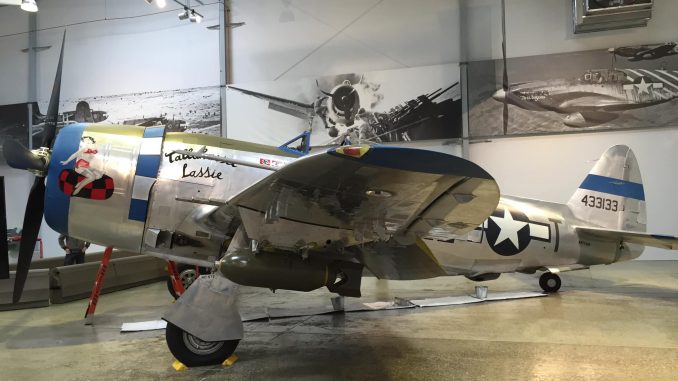
Since his childhood, Randy Malmstrom has had a passion for aviation history and historic military aircraft in particular. He has a particular penchant for documenting specific airframes with a highly detailed series of walk-around images and an in-depth exploration of their history, which have proved to be popular with many of those who have seen them, and we thought our readers would be equally fascinated too. If Randy’s last name seems familiar, it is because the U.S. Air Force’s present-day Malmstrom AFB, near Great Falls, Montana is named in honor of his cousin, Col Einar Axel Malmstrom. Col Malmstrom commanded the 356th Fighter Group during WWII, flying P-47 Thunderbolts, so it seems only fitting that the first of Randy’s articles will feature an example of the type, P-47D 45-49406 at the presently-shuttered Flying Heritage & Combat Armor Museum in Everett, Washington. We hope you enjoy Randy’s work as much as we do!
Republic P-47D-40-RA Thunderbolt, s/n 45-49406, constr. no. 399-55945, N7159Z
This particular aircraft rolled off the production line at Republic Aviation’s plant in Evansville, Indiana during the spring of 1945. Republic delivered her to the U.S. Army Air Forces on June 27, 1945, but she immediately went into storage, remaining there until March 1948 when the U.S. Air National Guard took her on strength. In September, 1954, the Thunderbolt journeyed south of the equator to serve with the Brazilian Air Force (as s/n 4192). Indeed, this Thunderbolt was one of many combat aircraft which the U.S. sent to Latin American countries as part of post-World War II military assistance programs. Essentially a Lend-Lease program, the ‘Rio Treaty’ of 1947 was an agreement binding republics within the Western Hemisphere together in a mutual defense system. (Some also referred to this arrangement as the Rio Pact or the Inter-American Treaty of Reciprocal Assistance; the treaty became effective on December 3, 1948 following ratification from two-thirds of the member states.)
After 45-49406’s retirement from active service with Brazil’s armed forces in January, 1960 the Thunderbolt became an instructional airframe at Sao Jose dos Campos AB. She later went on display at Campo Grande Air Force Base, Mato Grosso do Sul, Brazil (see photo).
However, the aircraft later went on sale in the USA, arriving as a dismantled project in Chino, California during September, 1988. She went through a couple of owners in the following decade, before the late Paul Allen’s Flying Heritage Collection purchased her in August, 1998. The museum selected WestPac Restorations (co-owned by Bill Klaers and Alan Wojciak), then in Rialto, California, to rebuild the aircraft to concourse, airworthy condition. Her restoration concluded with a successful first flight in Rialto on January 27th, 2006, and she has occasionally performed flying demonstrations at the museum’s home in Washington State since that time.
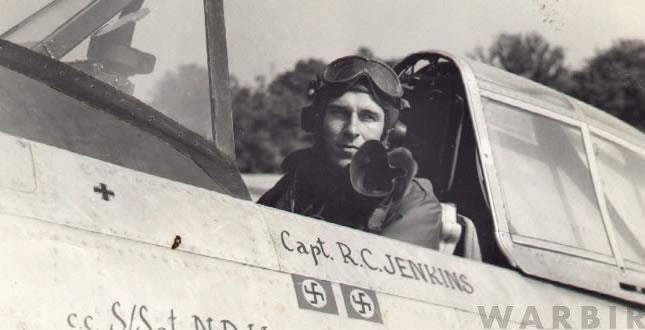
The museum had the Thunderbolt painted to represent P-47D-30-RA 44-33133, an aircraft flown by Seattle-born Capt. Ralph C. Jenkins who led the 510th Squadron, 405th Fighter Group of the 9th Air Force based in Christchurch, England. The fighter’s nose art, Tallahassee Lassie, was inspired by Jenkins’ wife Tiero (a native of Tallahassee, Florida) and the 510th FS’s “Willie the Wolf” unit patch. The red-encircled swastikas, of course, represent Jenkins’ aerial victories over Luftwaffe aircraft, whilst the others represent aircraft sitting on the ground which he destroyed with the fighter. Thankfully, Col. Jenkins survived the war and lived a long life. He died peacefully in his sleep aged 98 on May 10, 2017.
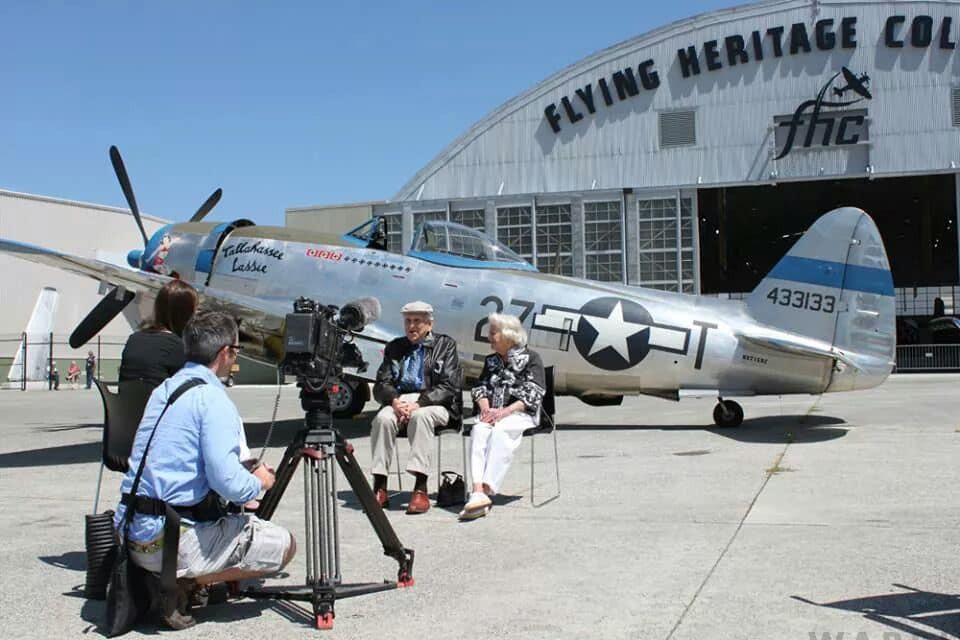
Regarding the P-47s technical details, the aircraft was fitted with a Pratt & Whitney R-2800-59 18-cylinder engine. She was armed with eight Browning .50 cal. machine guns – staggered due to the placement of the ammunition belts (note the stainless steel cooling jackets on the gun barrels). The fighter could also carry up to 2,500 lbs. of bombs or 5-in. unguided missiles mounted on wing hard points. Interestingly, the landing gear telescopes in and out nine inches, saving space in the wings. Furthermore, note the windscreen heater tube which leads from the right side of the front of the engine. You can see the engine blow-back on the port side wheel well cover but not much of any on the starboard side due to prop wash. Late in World War II, many U.S. fighters were fitted with an AN/APS-13 UHF tail warning radar system which had a post and loop fixture on the tail fin and a warning light (on the cowl) and an alarm bell (next to the pilot) – you can see the post and loop on the tail fin in some of the accompanying photos in this article. The tail warning radar could detect aircraft in a narrow arc up to 2,500 ft. from behind the aircraft – however when the P-47 flew lower than 4,000 ft. over terrain, the radar had a tendency of picking up reflections from the ground, improperly setting off the alarm. Almost as important, the radar could not differentiate between friend and foe. Another interesting detail you should be able to see on the port side of the cockpit interior are red IFF (Identification Friend or Foe) communications self-destruct buttons.
For videos and photos of this airplane, please visit Randy’s Facebook page.
About Randy Malmstrom
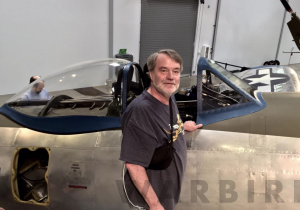 Randy Malmstrom grew up in a family steeped in aviation culture. His father, Bob, was still a cadet in training with the U.S. Army Air Forces at the end of WWII, but did serve in Germany during the U.S. occupation in the immediate post-war period, where he had the opportunity to fly in a wide variety of types which flew in WWII. After returning to the States, Bob became a multi-engined aircraft sales manager and as such flew a wide variety of aircraft; Randy frequently accompanied him on these flights. Furthermore, Randy’s cousin, Einar Axel Malmstrom flew P-47 Thunderbolts with the 356th FG from RAF Martlesham Heath. He was commanding this unit at the time he was shot down over France on April 24th, 1944, spending the rest of the war as a Prisoner of War. Following his repatriation at war’s end, Einar continued his military service, attaining the rank of Colonel. He was serving as Deputy Wing Commander of the 407th Strategic Fighter Wing at Great Falls AFB at the time of his death in a T-33 training accident on August 21st, 1954. The base was renamed in his honor during October, 1955, and continues to serve in the present U.S. Air Force as home to the 341st Missile Wing. Randy’s innate interest in history in general, and aviation history in particular, plus his educational background and passion for WWII warbirds, led him down his current path of capturing detailed aircraft walk-around photos and in-depth airframe histories, recording a precise description of a particular aircraft in all aspects.
Randy Malmstrom grew up in a family steeped in aviation culture. His father, Bob, was still a cadet in training with the U.S. Army Air Forces at the end of WWII, but did serve in Germany during the U.S. occupation in the immediate post-war period, where he had the opportunity to fly in a wide variety of types which flew in WWII. After returning to the States, Bob became a multi-engined aircraft sales manager and as such flew a wide variety of aircraft; Randy frequently accompanied him on these flights. Furthermore, Randy’s cousin, Einar Axel Malmstrom flew P-47 Thunderbolts with the 356th FG from RAF Martlesham Heath. He was commanding this unit at the time he was shot down over France on April 24th, 1944, spending the rest of the war as a Prisoner of War. Following his repatriation at war’s end, Einar continued his military service, attaining the rank of Colonel. He was serving as Deputy Wing Commander of the 407th Strategic Fighter Wing at Great Falls AFB at the time of his death in a T-33 training accident on August 21st, 1954. The base was renamed in his honor during October, 1955, and continues to serve in the present U.S. Air Force as home to the 341st Missile Wing. Randy’s innate interest in history in general, and aviation history in particular, plus his educational background and passion for WWII warbirds, led him down his current path of capturing detailed aircraft walk-around photos and in-depth airframe histories, recording a precise description of a particular aircraft in all aspects.


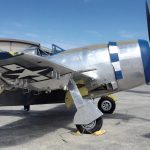
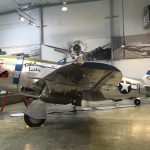
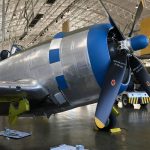
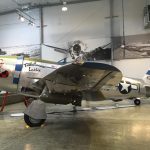
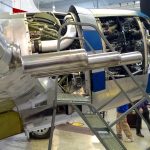
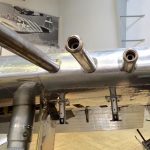
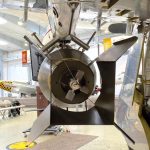
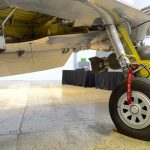
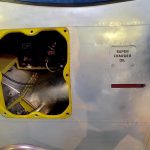
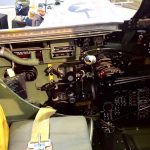
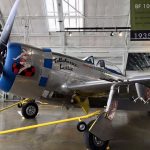
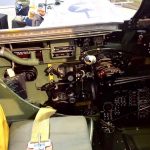

Go Randy! You’re a complete legend.
Thanks very much!
Randy really knows his way around a Warbird
I appreciate the comment, thanks! I’ve worked very hard at it